The interpretation of the Biblical account of creation in Genesis, among church fathers and creeds and confessional statements.
What science says about the origin of the universe: Geology and the age of the earth, Astronomy and the age of the universe, fossils and their age. The Big Bang.
Evolution, what it is and what it is not.
Simply, the theory of biological evolution states that that modern life is the result of an extensive process of evolution that began several billion years ago with simple single- celled organisms and developed to higher forms. This process involves both mutations, which are random changes in DNA sequences, and natural selection, which favors certain traits over another.
As an example, look at this tree of the development of elephants.
At the molecular level, genes are made of DNA and are inherited from parent to offspring. Some DNA sequences code for the amino acid sequence of proteins. Cytochrome C is a protein involved in using energy in the cell. Cytochrome C is found in most, if not all, known eukaryotes. Over time, random mutations in the DNA sequence occur. As a result, the amino acid sequence of Cytochrome C also changes. Scientists can determine the number of amino acid differences between different species. They then assume that the more similar they are, the more recently they have evolved from a common ancestor. The following table gives the differences in the number of amino acids in sequences:
They use these numbers to create
a tree of life. It agrees with trees produced by classification, the fossil record, etc.
Theistic evolution or evolving creation as a way to integrate faith and science. Definition
of theistic evolution: In simpler words, it may be the
“pen” God used when he wrote the”Book of Life”.
This is consistent
with Providence-just as God oversees our lives today without
intervening at every step, so God could have
created the world in one "big bang" and let it evolve to its present state. After the initial creation act, the universe could have developed with
a minimum of “irruption”, except for some events such as the
Incarnation, miracles or other interventions.
"If the Creator uses physics and chemistry to run the universe of life, why wouldn't He have used physics and chemistry to produce it too?" (From Finding Darwin's God, page, 268)
A. Other approaches
to the integration (or non-integration) of Creation and Evolution:
1. Six 24-hour days and a young earth of 6,000-10,000 years
Advantage- Allows a simple reading of Genesis 1.
Disadvantages - Science has totally opposite view.
- Placement of fossils is said to be a result of the worldwide flood of Noah's time. - All materials which science tells us are old were created 6,000-10,000 years ago with an appearance of age. Presently supported by Institute for Creation Research, first established in 1970. Website at www.icr.org
2.
Day-Age Creation (usually involves Progressive creation.)
Each "day" in Genesis 1 is really an age and God "breaks in" to create
at the right time.
Advantage - Allows time that science suggests and preserves literal order of Genesis 1. Disadvantage - Order does not agree with science completely. Plants appear before sea animals, birds before land mammals, sea mammals before land mammals.
Supported by Dr. Hugh Ross, Christian astronomer, writer, speaker, and founder of "Reasons to Believe." Website at www.reasons.org
3. Gap View (Creation-Ruin-Reconstruction)
Based on Genesis 1:1,2: In the beginning God created the heaven and the earth.
And the earth was without form, and void; and darkness [was] upon the face of the deep. And the Spirit of God moved upon the face of the waters.
Earth was created in Gen 1:1, became "formless and void" in
a catastrophe, and is recreated in Gen 1:3-2:23. Advantage-allows for the time factor suggested by science.
Disadvantage-no geological evidence for such a catastrophe.
- translation of Genesis 1:2 is doubtful.
Proposed by the Scottish theologian Thomas Chalmers and was included in the Scofield Study Bible. 4.
Intelligent Design.
Intelligent design theory asserts that certain biological features found in living organism could not have evolved naturally through incremental, useful steps. Dr. Michael Behe has proposed the term "irreducible complexity" to describe these features. A system is irreducibly complex if the removal of one of its parts would render the entire system useless.
The proponents of ID assert that the combination of nerves, sensory cells, muscles, and lens tissue in the eye could only have been "designed" from scratch. After all, how could evolution, acting on one gene at a time, start with a sightless organism and produce an eye with so many independent parts, such as a retina, which would itself be useless without a lens, or a lens, which would be useless without a retina?
Advantages - Explains the origin of very complex organisms and structures.
- Very popular among Christians, since although the "designer" is not named, Christians use the term as applying to God.
Disadvantage - Each of the examples cited by ID can be explained by evolution. For example, the "eye" appears in some simple creatures such as the chambered nautilus as simple light sensitive cells. it is possible to draw a series of incremental changes that would lead directly to the lens-and-retina eye. None of the intermediate stages are unreasonable, since each requires nothing more than an incremental change in structure: an increase in cell number, a change in surface curvature, a slight increase in transparency.
- Requires intervention by God at every point of complexity.
- If there was a designer, why were there so many species which did not survive, many of which seemed to be intermediate forms? (See the ancestry of elephants above?)
B. Origin of humans
1.
What does science say? a. Paleontology tells us about hominid fossils
These hominids were all bipedal, and knee joint and thighbone sockets became more and more modified for walking. Arms became relatively shorter and legs relatively longer. Canine teeth became smaller. The braincase became larger (from 400cc to 1500cc.)
b. Paleoanthropology tells us about the existence of anatomically modern humans as early as 100,000 years ago in Africa, 40,000 years ago in the Old World. They did art (Cro-Magnon art of 20,000 years ago ), made beads and jewelry ( 40,000 years ago), made tools, buried their dead, had primitive musical instruments (50,000 year old bone flute), some seemed to have some religious rites. and some even murdered their fellow beings!
c. Biochemistry tells us about mitochondrial
DNA which shows maternal ancestry of all European women back to 7 ancestral mother groups. All seven of the genetic groups appear to be descended from one of three clans that still exist today in Africa. See "The Seven Daughters of Eve" by Bryan Sykes.
This chart is part of a 1987 study which shows a tree of 16 people from 4 different parts of the world: Africa, Asia, Europe and Papuans from New Guinea. The lines that connect the sixteen people are drawn to reflect genetic differences between them in their mitochondrial DNA. Over the years mtDNA changed in the human population because of mutations. The people who have the most similar mtDNA are more closely related and so are joined by shorter branches in this diagram.
Dr. Douglas C. Wallace and his colleagues at the Emory University School of Medicine in Atlanta constructed a world female genetic tree based on mitochondrial DNA. Dr. Wallace found that almost all American Indians have mtNDA that belong to lineages he named A, B, C and D. Europeans belong to lineages H through K and T through X. The split between the two main branches in the European tree suggests that modern humans reached Europe 39,000 to 51,000 years ago, Dr. Wallace calculates, a time that corresponds with the archaeological date of at least 35,000 years ago.
A similar case holds for paternal ancestry through the Y chromosome. A male genetic tree based on the analyses of the Y chromosome has been constructed. Preliminary findings of this study in a book, "Genes, People and Languages," by Dr. Luca Cavalli-Sforza . The tree starts with a single Y chromosomal Adam with 10 principal branches. Of these sons of Adam, the first three (designated I, II and III) are found almost exclusively in Africa. Son III's lineage migrated to Asia and fathered sons IV-X. These sons then spread through the rest of the world. Son IV spread to the Sea of Japan, son V to northern India, and sons VI and IX to the South Caspian.
2. What does the Bible say about human origins?
The story of Cain after he killed his brother Abel raises a number of interesting questions:
Gen 4:14 Behold, thou hast driven me out this day from the face of the earth; and from thy face shall I be hid; and I shall be a fugitive and a vagabond in the earth; and it shall come to pass, [that] every one that findeth me shall slay me.
Where did Cain get his wife? Who were the people who were going to kill him? Why did he need to build a city for himself and his son Enoch?
Gen 4:18 And unto Enoch was born Irad: and Irad begat Mehujael: and Mehujael begat Methusael: and Methusael begat Lamech.
Adam and Eve described in
Genesis must have lived about 8000BC-agriculture, hunting. In just 8 generations, they have musicians and work in brass and iron.
In Genesis 6 we read of "sons of God" and "daughters of Men" and giants. Who were they and where did they come from?
Gen 6:2 That the sons of God saw the daughters of men that they [were] fair; and they took them wives of all which they chose. How can we explain these apparent contradictions?
1. The entire human race--all human beings who have ever lived or are now living, all image-bearers of God--is directly and biologically descendant from an historical Adam and Eve, created by God about 10,000 years ago.
Advantage - Allows a literal reading of Genesis 2-4
Disadvantage - Could all living persons have descended from an ancestor in the Near East 6,000-10,000 years ago?
- What about the anatomically modern humans which science places much earlier?
- What about the DNA studies which suggest that humans first appeared in Africa?
2. Adam and Eve are the parents of the human race in a representative sense rather than a biological sense. God chose these two from the anatomically modern human beings which were living at that time and "breathed the breath of life" into them.
Advantage - Accounts for Cain's wife and fear of those who might kill him.
Disadvantage -
Only some human beings living during the past 10,000 years were or are biological descendants of Adam and Eve. The rest were or are descendants of pre-Adamic people. This creates theological problems. How are we to treat the pre-Adamic people-and their descendants?
- There are also theological problems with regard to original sin, which the Bible tells us entered through the fall of Adam.
3. Adam and Eve are the biological ancestors of the entire human race, but they lived much earlier, as much as 100,000 years ago.
Advantage - Acknowledges the compelling nature of the fossil evidence that anatomically modern humans have been in the world for tens of thousands of years.
-
Preserves the historic confessional view of original sin which includes transmission of sin by inheritance to all people from Adam.
Disadvantage - Probably requires that the first humans lived in Africa rather than the Middle East. The description of Eden may have been written in terms of the time Genesis was written, rather than when it really happened in this scenario.
4. Adam and Eve are mythological characters, mythological here in the sense that a myth isn't necessarily an untrue story, but a story that expresses what people consider to be the ultimate truth about man and the universe. The word adam in Hebrew means "man" or "mankind" or "human being" and the Hebrew word for Eve means "life" or "living."
The context of the story of Adam and Eve in Eden in the Near East may result from the writer's point of view and his personal experience in that area. Genesis 2-4 then is treated as a theological statement about the relationship between God and humans.
Advantage - Removes problems of timing in explanations above.
Disadvantage - This does not account for the concept of original sin and how man came to be separated from God.
C. Theological questions
Original Sin
Original sin is the doctrine, shared in one form or another by most Christian churches, that the sin of Adam and Eve in the Garden of Eden changed or damaged human nature, such that all human beings since then are innately predisposed to sin, and are powerless to overcome this predisposition without divine intervention. The doctrine is based on such texts as Romans 5:12
"Therefore as sin came into the world through one man and death through sin, and so death spread to all men because all men sinned."
Providence and Creation as doctrines.
I believe that theistic evolution or evolving creation is consistent with Providence-just as God oversees our lives today without intervening at every step, making us puppets, so God could have created the world and let it evolve to its present state. I believe that this was done with a minimum of “irruption” or breaking in , except for some events such as the Incarnation, miracles or other interventions.
Why would God use such a long, indirect process to create modern plants and animals? Why not just say the word and have them come into being (creation by fiat)?
Here's some possibilities:
-- God likes process. Consider the slow development of each new human being, each of our spiritual lives, the long history of the church, the long history of the nation of Israel, etc.
-- God fixes our sinfulness not by instantly changing us (like we were a machine), or starting over (like we were a mistake), but by patiently teaching us (like a parent with a child).
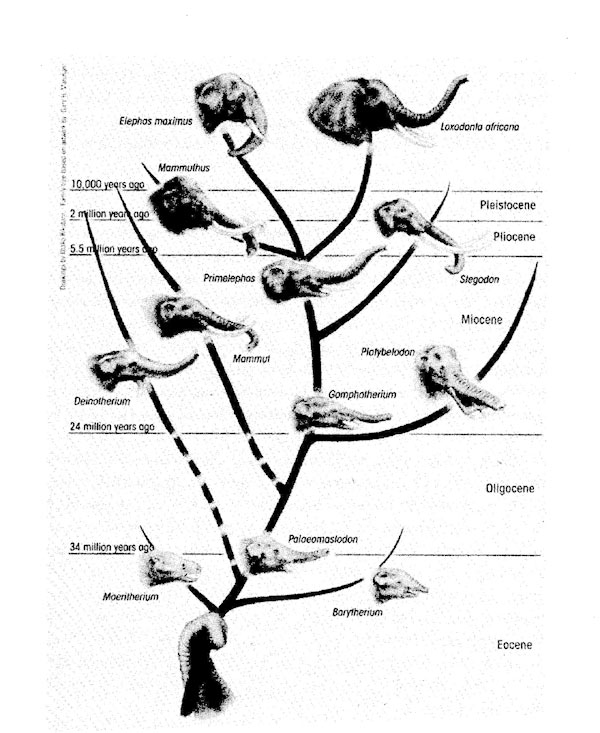
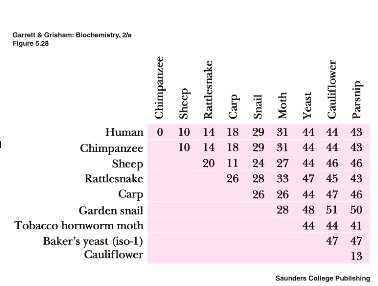
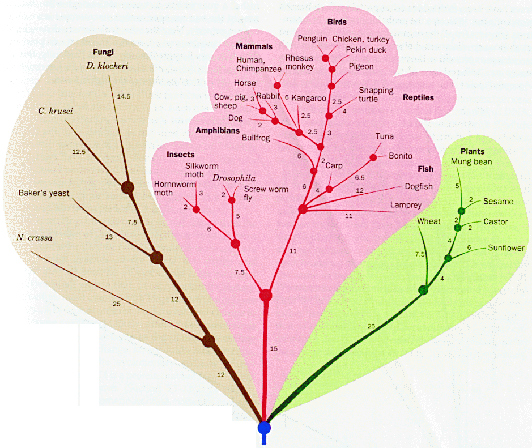
The theistic evolutionist holds a
position somewhat between that of the absolute evolutionist and the
creationist. He believes that God created the materials of our
universe and then guided and superintended the process by which all
life has evolved from the very simplest one-celled form on up to the
sophisticated forms which we know today. In other words, God
designed a world which has within itself all the capabilities to
develop life and its diversity.
Day 1
Gen 1:1
Creation of entire physical
universe (space, time, matter, energy, stars, planets, etc)
13-15 bya
Gen 1:2
Formation of earth and oceans
4 bya
Gen 1:3-5
Earth's atmosphere is partially
cleared so light can be seen.
3.9 bya
Gen 1:6-8
Formation of stable water
cycle.
3.9 bya
Day 2
Gen 1:9-10
Formation of continents
and ocean basis (using tectonics? "gathered waters")
2.7 bya
Day 3
Gen 1:11-13
Creation of plants on land.
0.9 bya
Day 4
Gen 1:14-19
Transformation of the atmosphere
from translucent to transparent as sun, moon and stars show through
0.9-0.6 bya
Day 5
Gen 1:20
Creation of swarms of small
sea animals (consistent with Cambrian explosion?)
0.5 bya
Gen 1:20b
Creation of birds
140 mya
Gen 1:21-23
Creation of sea mammals
60 mya
Day 6
Gen 1:24-25
Creation of land mammals
30 mya
Gen 1:26-28
Creation of modern humans
100K-50K
years ago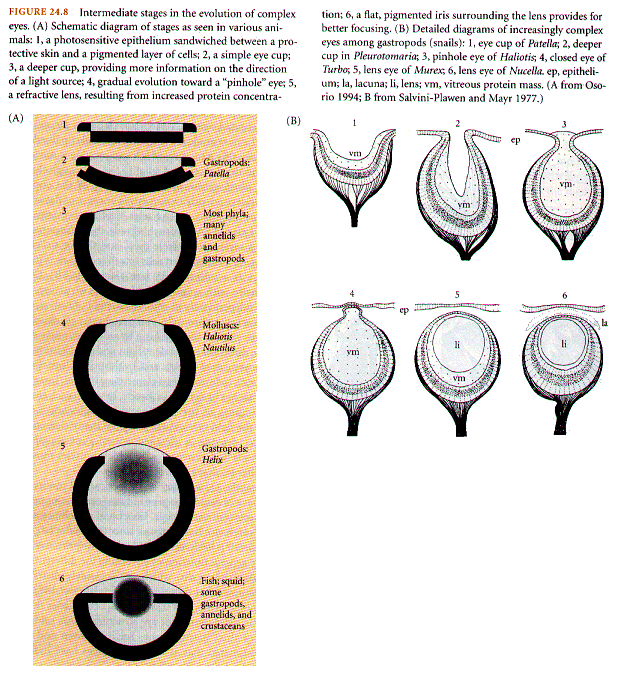
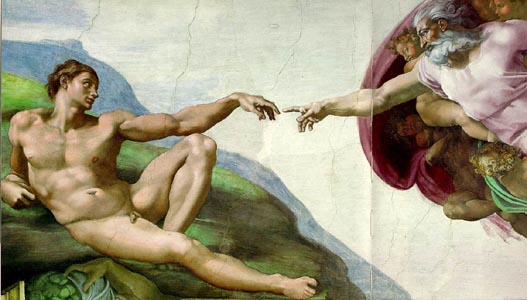
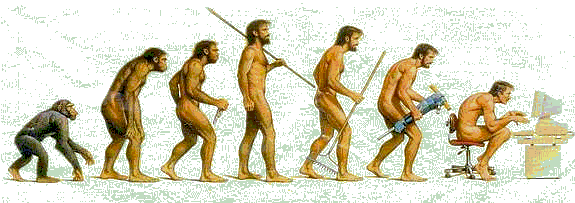
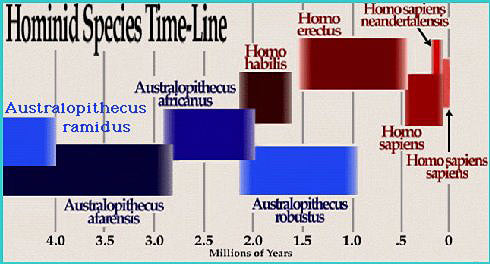
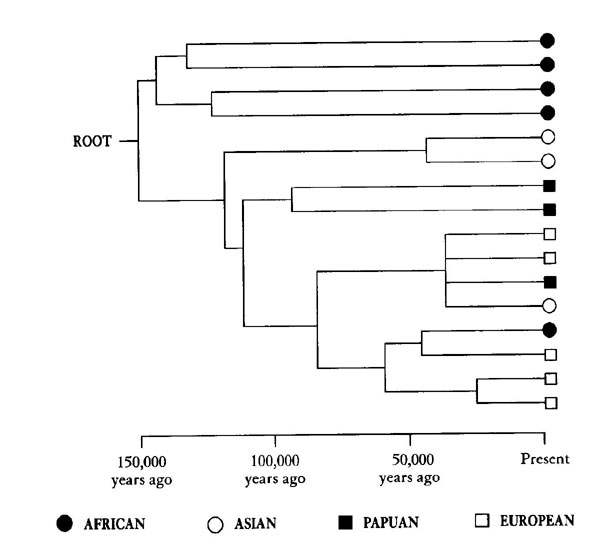
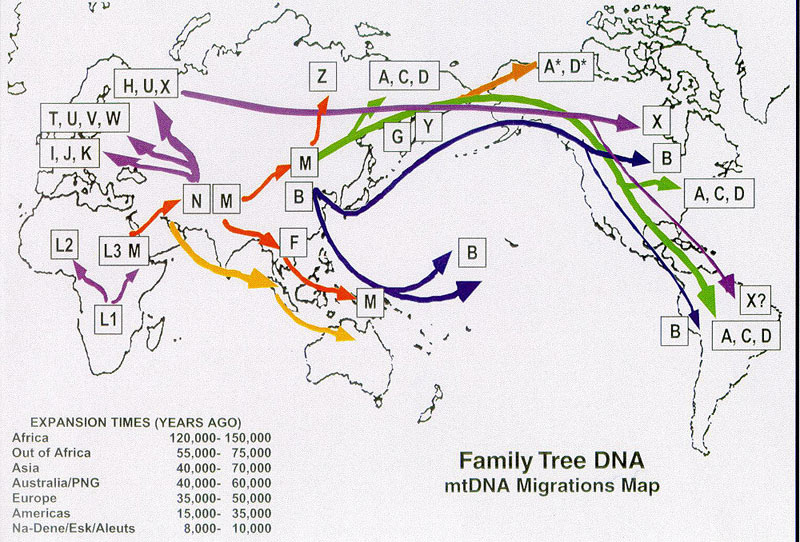
Gen 4:15 And the LORD said unto him, Therefore whosoever slayeth Cain, vengeance shall be taken on him sevenfold. And the LORD set a mark upon Cain, lest any finding him should kill him.
Gen 4:16 And Cain went out from the presence of the LORD, and dwelt in the land of Nod, on the east of Eden.
Gen 4:17 And Cain knew his wife; and she conceived, and bare Enoch: and he builded a city, and called the name of the city, after the name of his son, Enoch.
Gen 4:19 And Lamech took unto him two wives: the name of the one [was] Adah, and the name of the other Zillah.
Gen 4:20 And Adah bare Jabal: he was the father of such as dwell in tents, and [of such as have] cattle.
Gen 4:21 And his brother's name [was] Jubal: he was the father of all such as handle the harp and organ.
Gen 4:22 And Zillah, she also bare Tubalcain, an instructer of every artificer in brass and iron: and the sister of Tubalcain [was] Naamah.
Gen 6:4 There were giants in the earth in those days; and also after that, when the sons of God came in unto the daughters of men, and they bare [children] to them, the same [became] mighty men which [were] of old, men of renown.
.